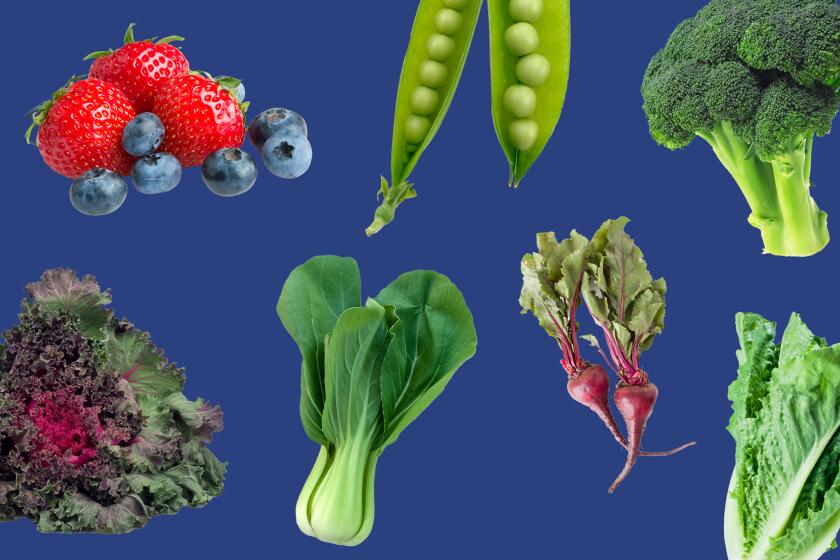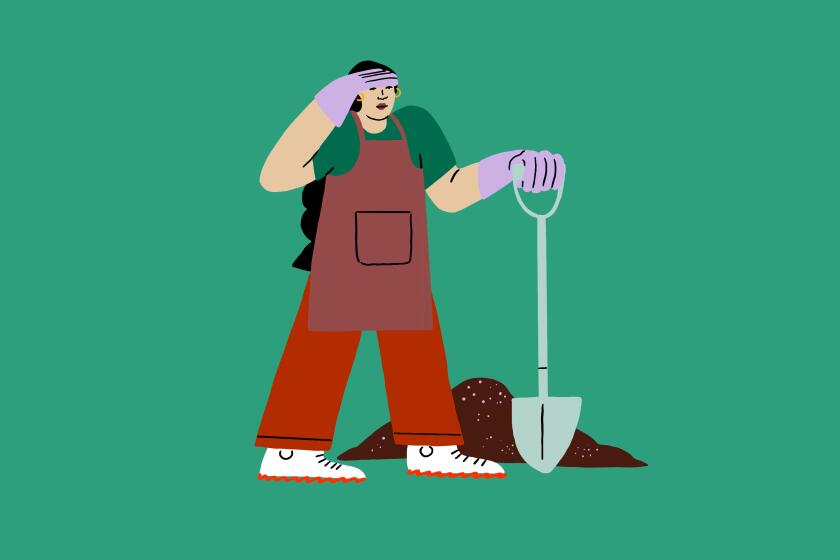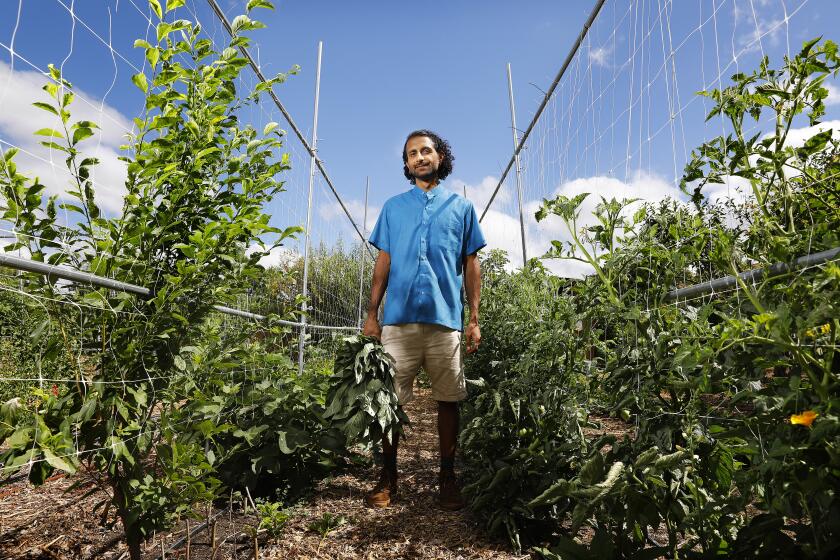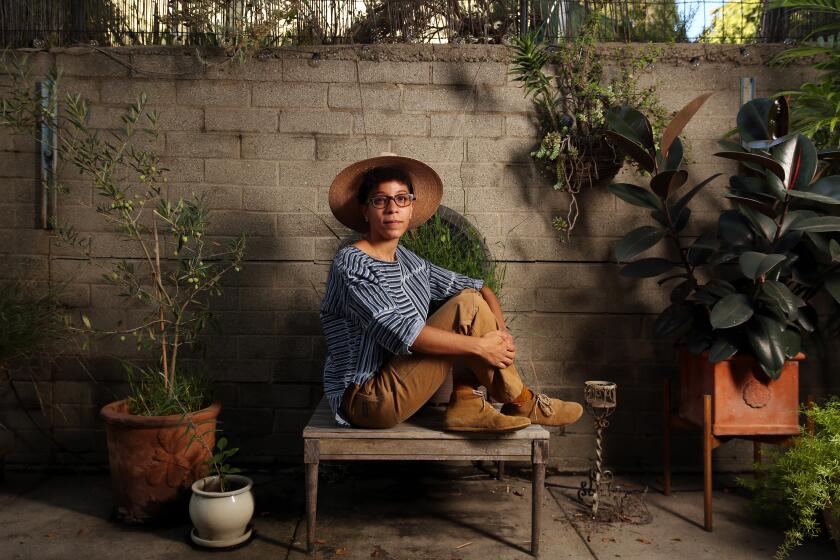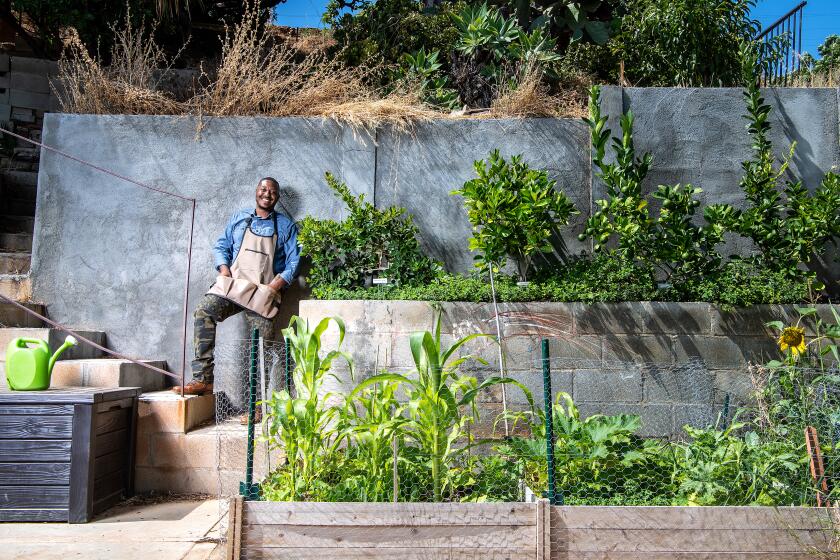Don’t give up on gardening now! Fall is the easiest time to grow food in SoCal
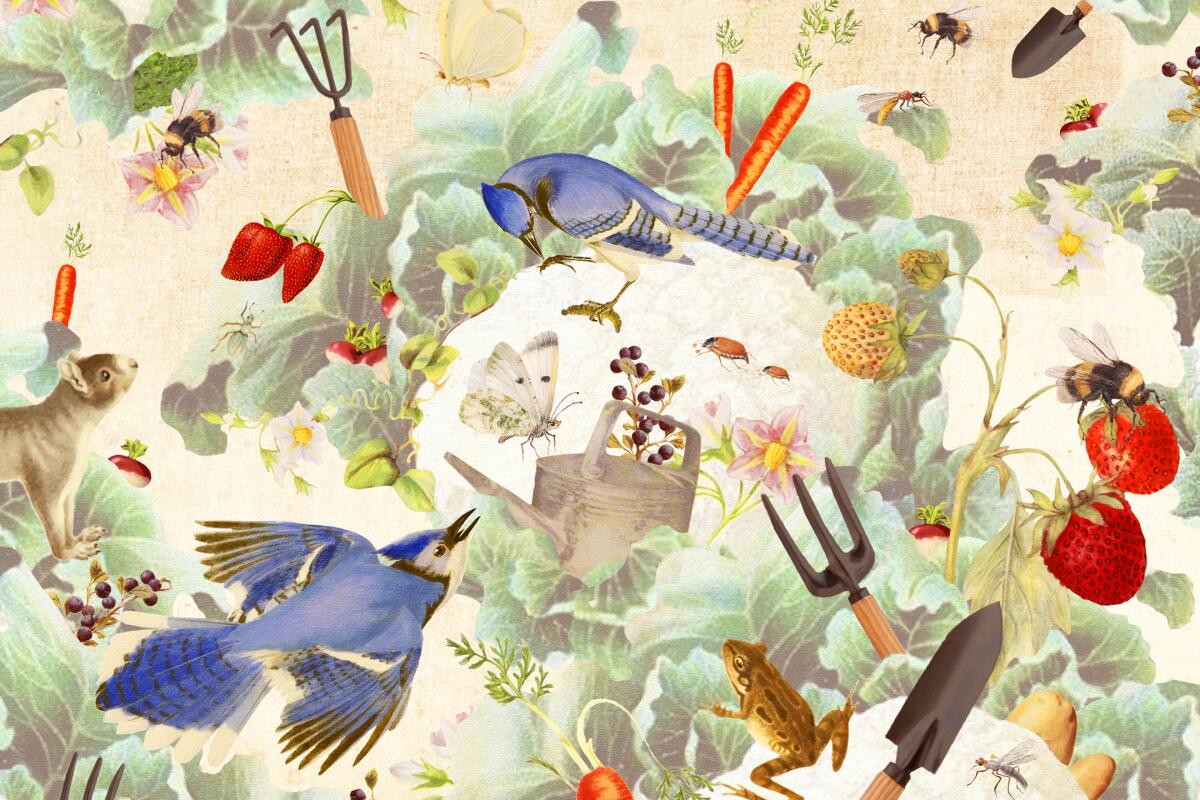
- Share via
Somehow, in this disquieting year that’s lasting a lifetime and still speeding way too fast, we’ve stumbled headlong into fall. And those gardens so many of us planted with such desperate hope in the spring? Well, it’s the end of the season, so likely they’re looking pretty sad right now, especially in Southern California, where they could have gotten crisped in our late-summer heat wave or smothered under a layer of smoky ash.
But new gardeners, take heart: In Southern California, fall is the golden time for garden do-overs, when the weather is milder, the insects are fewer and the watering is less, if needed at all.
While people in colder climes are preparing to hang up their hoes, SoCal gardeners are entering the optimum time for growing cool-season crops and prepping for a fruitful bounty of berries next spring. This is the best time to grow root crops like beets, potatoes and radishes, lush rows of tangy greens, towers of peas and all those spicy, healthy brassicas like arugula, broccoli, cauliflower and kale.
“I can’t wait for the fall garden; it’s actually my favorite,” said Jo Anne Trigo, co-owner (with her husband, Alejandro) of Two Dog Organic Nursery in Mid-City, named L.A.’s best nursery in 2020 by Los Angeles Magazine.
“Somehow or another the fall garden seems cleaner and quieter, if such words can describe a garden,” Trigo said, “and it’s also lower to the ground. You don’t have your massive corn and tomatoes, so it seems in some way easier. By the end of summer I’m sick of my ratty tomatoes.”
Farmer Rishi Kumar grows top-tier fruits and offers gardening tips on Instagram: “Gardening is such an important way of connecting with the earth, connecting with ourselves and eating well.”
Easier and much less stressful, said master gardener Yvonne Savio, creator of the comprehensive GardeningInLA.net.
“Your plants are able to grow much more successfully because it’s a slower growing period,” Savio said. “It’s cooler, so your plants aren’t stressed out anywhere near during the summer, and it’s more enjoyable. You’re able to harvest stuff for months and months and months and consequently get so much more food from the plants you’re nurturing along.”
Get The Wild newsletter.
The essential weekly guide to enjoying the outdoors in Southern California. Insider tips on the best of our beaches, trails, parks, deserts, forests and mountains.
You may occasionally receive promotional content from the Los Angeles Times.
Bottom line, if you felt like your first venture into gardening wasn’t a smash success, don’t give up now. Think of all you’ve learned and embrace the fall as a kinder, gentler way to grow the food we crave come winter — like the greens that enrich our soups and stews or the root crops we love to roast on chilly nights — while preparing for a spring harvest of yummy berries, such as blueberries, strawberries and raspberries.
Even fall garden prep won’t be as hard as it was for first-timers in the spring. Pull out your tired summer plants, unless they’re looking super healthy and producing well, Savio said, and replenish your nutrient-depleted soil by mixing in amendments like compost and aged manure. Wait a week or two before planting, since the new organic matter will start “cooking” as the microorganisms begin breaking down, heating the soil to temperatures that could burn tender seedlings or seeds.
Many cool-weather crops do best if they’re planted as seed directly into the garden, including peas (set up some kind of trellis for support), lettuces, beets, radishes, carrots and other root vegetables as well as herbs such as cilantro and parsley.
Jamie Renee Williams turned a tiny strip of dirt outside her apartment into an edible garden. You can tour it online during the LA Design Festival.
Other cool-weather crops are easier to grow as transplants, such as arugula, broccoli, broccolini, kohlrabi, bok choy, spinach, leeks and celery. Kale and chard can be grown from seed or transplant, Savio said, and she recommends doing both to stagger your harvests.
Don’t forget flowers, such as ornamental cabbages and kale, edible calendula and violas, and especially sweet peas, which are not edible but so colorful and fragrant you’ll wish you could eat them when they start blooming in the spring.
If you plant berries, you won’t start harvesting until spring, and the first year the pickings will be slim, but consider this an investment in years of increasingly bountiful harvests. Planting in fall helps the berry plants get established during the cooler months, Savio said, and benefit from our rainy season (which usually begins around January).
His East L.A. backyard is mostly concrete, but Ken Sparks has transformed the hardscape into something alive, with chickens, a butterfly garden and organic vegetables.
Most berries can go in the ground or containers, but if you crave blueberries, plant them in big containers, Trigo said, at least 24 inches deep and 24 inches in diameter, so you can grow them in the acidic soil they prefer. (Most soils in Southern California tend to be more alkaline.) Use organic potting soils designed for acid-loving plants like azaleas and, every two months, give the soil an “acid drench” of 4 tablespoons of distilled white vinegar mixed into two gallons of water to replenish the acidity that’s washed away by our highly alkaline water.
And come winter, take lots of pictures of your lush green garden to drive your snow-bound East Coast peeps mad on Instagram.
That’s almost worth the price of seeds and amendments right there.
More to Read
Sign up for The Wild
We’ll help you find the best places to hike, bike and run, as well as the perfect silent spots for meditation and yoga.
You may occasionally receive promotional content from the Los Angeles Times.
